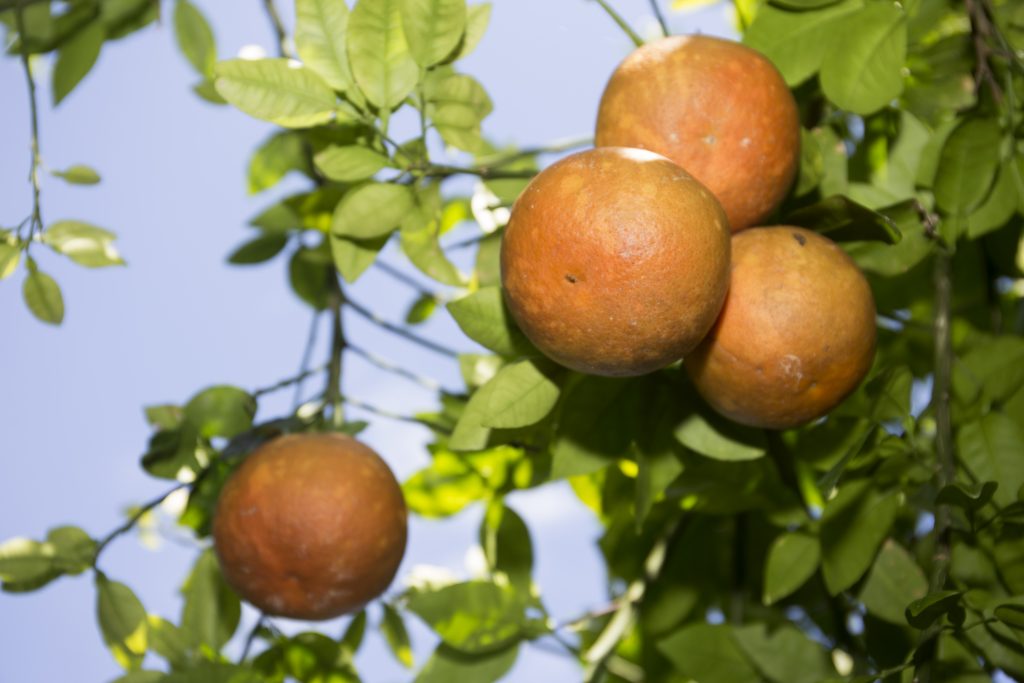
(UF/IFAS) — University of Florida citrus researchers continue to be sought out as partners in ground-breaking research projects to fight Huanglongbing, also known as citrus greening disease.
The National Institute of Food and Agriculture (NIFA), part of the U.S. Department of Agriculture (USDA), recently awarded nearly $4.5 million in grants to UF Institute of Food and Agricultural Sciences faculty to find novel ways to fight the disease.
But UF/IFAS researchers are serving leadership roles in four other multi-million-dollar grants awarded to colleague institutions from across the nation. Collectively, these projects provide an aggressive, integrative strategy to finding sustainable solutions in the fight against citrus greening.
Cultural and Genetic Approaches
Ute Albrecht, amdas Kanissery and Sarah Strauss, assistant professors at the UF/IFAS Southwest Florida Research and Education Center (SWFREC) are working with University of California-Riverside on a $10 million grant to examine root decline associated with HLB-affected trees.
UF/IFAS will receive $2,240,000 over five years. Strauss, Albrecht and Kanissery will conduct large-scale field trials, working with Florida commercial citrus growers to explore the efficacy of using cover crops and soil amendments and the interaction with rootstock to improve soil and root health in newly planted and established groves. The project will also examine the impact of cultural practices like herbicide application on soil health and tree productivity.
Evaluation, Validation of Novel, HLB-Resistant or Tolerant Citrus Hybrid Scion Cultivars
Ute Albrecht and Zhengfei Guan, an associate professor at the UF/IFAS Gulf Coast Research and Education Center will work with University of California-Riverside, Texas A&M, and Washington State University, and USDA ARS on a $4.6 million project to test and deliver novel, HLB resistant/tolerant, non-transgenic, and commercially acceptable citrus scion cultivars to citrus industries. The scion cultivars will be tested in field trials, working with commercial citrus growers, to assess HLB resistance/tolerance and whether they produce fruit with acceptable fruit quality.
USDA Agricultural Research Service (ARS) – Coordinated Agricultural Projects (CAP) therapeutic molecule evaluation and field delivery pipeline for solutions to HLB
Lorenzo Rossi, an assistant professor at the UF/IFAS Indian River Research and Education Center (IRREC), and Jawwad Quershi, an assistant professor at UF/IFAS SWFREC, will collaborate with the USDA ARS on a $9,380,000, multi-state grant, examining different ways to deliver therapeutic growing methods to citrus growers. Rossi will manage greenhouse and field studies aimed to evaluate HLB-therapeutic molecules’ effects on root and plant physiology, with the final goal to identify the most cost-effective strategy to deliver these molecules to growers. Qureshi will lead UF’s outreach efforts with growers and the other institutions involved in the project. UF/IFAS will receive $1,334,252 over five years for this work.
The lead institution is the USDA ARS located in Fort Pierce, FL and the project involves several USDA ARS facilities (Ithaca NY, Wapato WA, Albany CA, and Dawson GA), as well as, public institutions: Indian River State College in Florida, the University of Florida and the University of California, and private companies in California and Florida.
This project has also been designated as a Center of Excellence. The designation means the technology used in the project has the potential to transform rural agriculture, advances technologies for therapeutic molecule production beyond control of citrus greening to diseases in other crops, humans and other animals, coordinates activities across several national citrus greening research programs and will include community participation in evaluation of HLB therapeutics.









